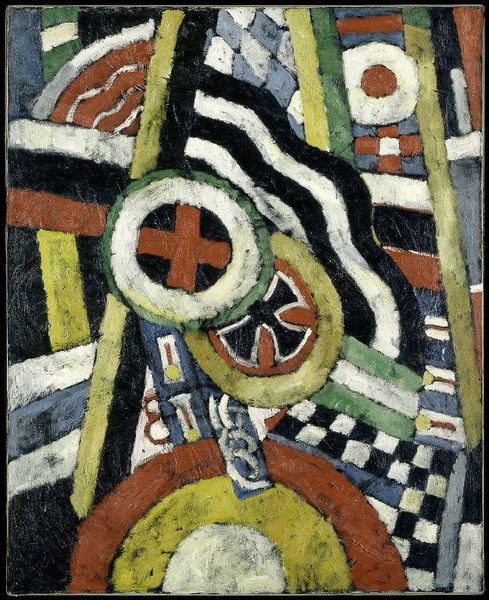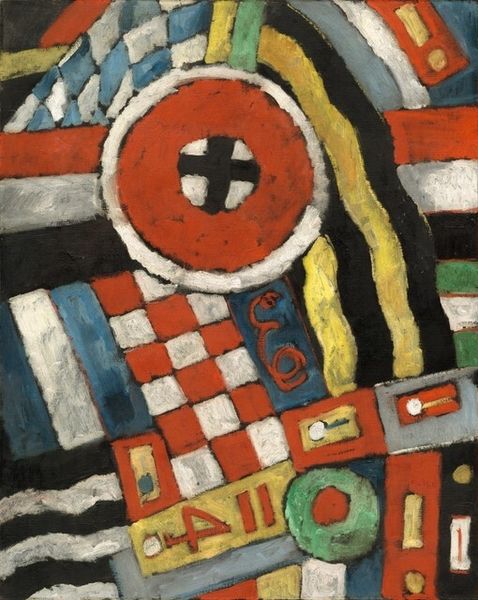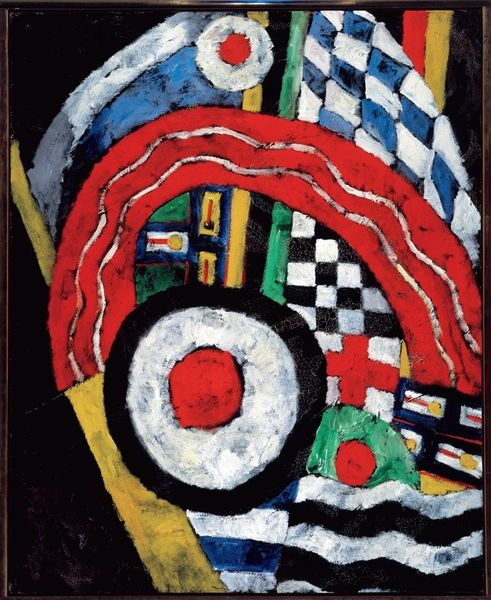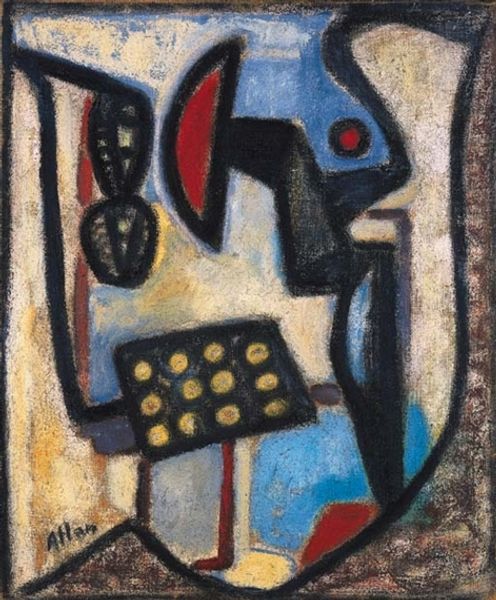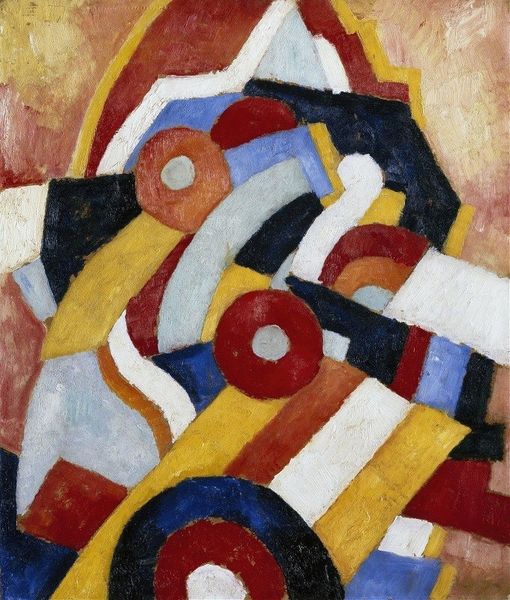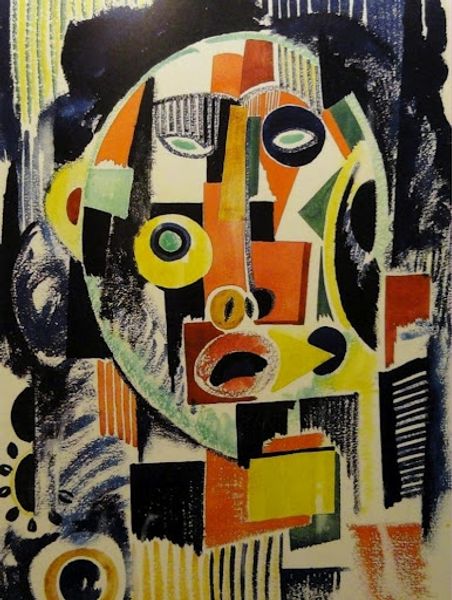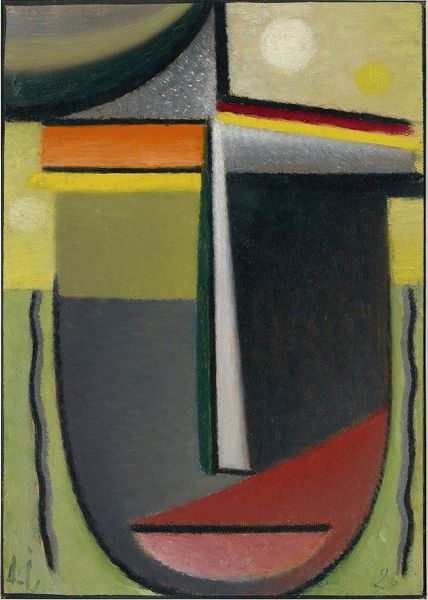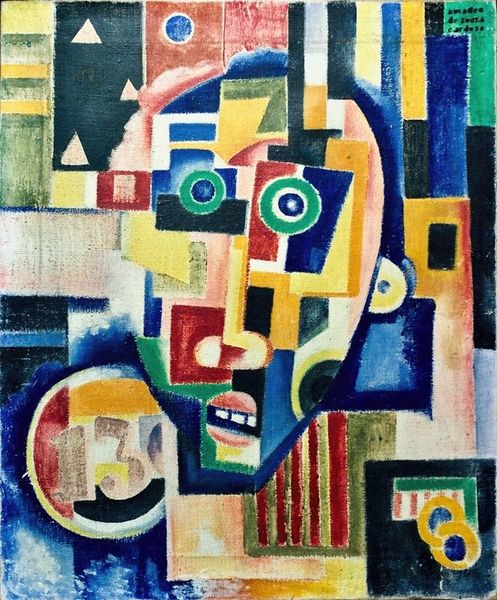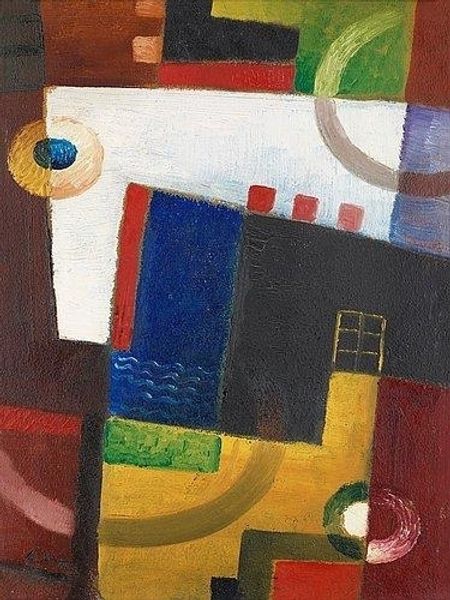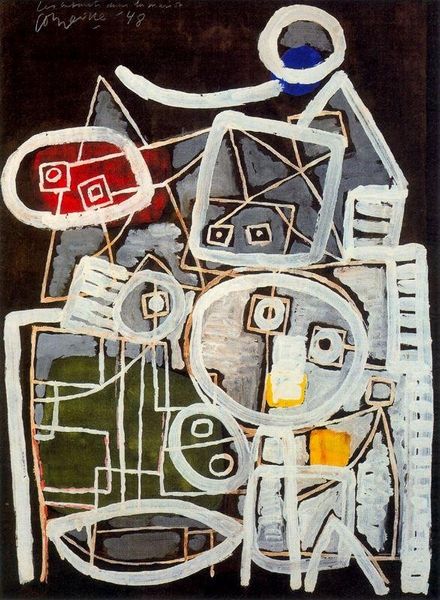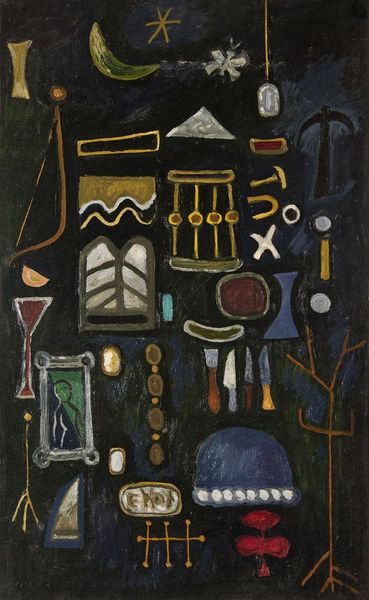
painting, oil-paint
#
portrait
#
abstract painting
#
painting
#
oil-paint
#
german-expressionism
#
figuration
#
abstract
#
geometric
#
expressionism
#
symbolism
#
history-painting
#
modernism
Copyright: Public Domain: Artvee
Editor: This is Marsden Hartley’s "Portrait of a German Officer," painted in 1914. The painting, oil on canvas, strikes me as both chaotic and controlled, like a military uniform deconstructed into geometric forms and vibrant colors. What's your perspective on this seemingly abstract portrait? Curator: Looking through a materialist lens, I see a critical commentary on the industrialization of warfare. Consider the fractured, geometric forms; they echo the machine age and the fragmentation of identity within the military system. What do you think Hartley is trying to convey by reducing the officer to these almost symbolic, manufactured components? Editor: So you see the abstraction as a representation of the mechanization of war? It's like the officer is being processed, turned into a cog in the machine. Curator: Exactly! Notice the prevalence of symbols – the Iron Cross, flags – all flattened and depersonalized. This removes the romance from war. Furthermore, the materiality of the oil paint, applied thickly and boldly, emphasizes the physicality and labor involved in the act of creation itself. Hartley is making something; is he also unmaking the myths around war? Editor: That’s fascinating. I hadn't considered the physical application of the paint as part of the message. Curator: Consider also that this work was created just before the full horrors of World War I were revealed. The materials—the paint, the canvas—were becoming increasingly scarce as the war consumed resources. What is Hartley implicitly communicating through this lavish, material display in a moment of impending scarcity? Editor: It’s like he’s flaunting the materials while simultaneously critiquing what that kind of consumption leads to. The war machine consumes resources, people… and identities. Curator: Precisely. This artwork forces us to confront the materials and means by which both art and war are produced, laying bare the complex relationship between creation, destruction, and consumption. Editor: I see that so clearly now. Thanks for shedding light on how materials and historical context contribute to the painting’s critical message. Curator: And you've highlighted how form and material are powerful conveyors of social commentary, which enhances the materiality as the centre of this analysis.
Comments
No comments
Be the first to comment and join the conversation on the ultimate creative platform.
